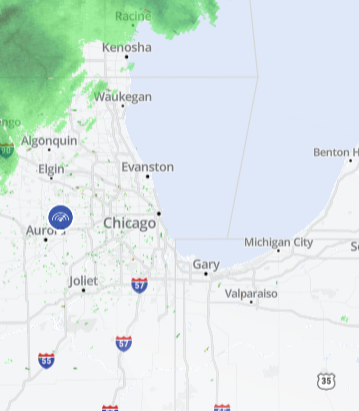For those who contract COVID amid the wave of BA.5 omicron subvariant cases, how long do symptoms last and which might take longer to resolve?
For those who do experience COVID symptoms, certain conditions may last longer than others.
Longer-Lasting Symptoms
Chicago Department of Public Health Commissioner Dr. Allison Arwady said Tuesday that a cough will likely be the symptom that lingers longest, while a fever will be among the first symptoms to fade.
Feeling out of the loop? We'll catch you up on the Chicago news you need to know. Sign up for the weekly Chicago Catch-Up newsletter here.
"Cough tends to be the most lingering effect. That's true whenever you have any viral infection," Arwady said during a Facebook Live. "You can be feeling totally better, you're still gonna have some irritation and... a cough doesn't mean you're contagious past 10 days but that's usually the last to go away."
Fatigue is another symptom that can last a bit longer, she said.
The CDC says most people with COVID-19 "get better within a few days to a few weeks after infection."
Local
But for some, officials note that symptoms may last even longer.
"Post-COVID conditions can include a wide range of ongoing health problems," the CDC states. "These conditions can last weeks, months, or years."
A recent study from Northwestern Medicine showed that many so-called COVID "long-haulers" continue to experience symptoms like brain fog, tingling, headaches, dizziness, blurred vision, tinnitus and fatigue an average of 15 months after the onset of the virus.
"Long-haulers,” are defined as individuals who have had COVID symptoms for six or more weeks, the hospital system has said.
But, according to the CDC, four weeks after infection is when post-COVID conditions could first be identified.
"Most people with post-COVID conditions experienced symptoms days after their SARS CoV-2 infection when they knew they had COVID-19, but some people with post-COVID conditions did not notice when they first had an infection," the CDC states.
Long-COVID symptoms can range from a wide variety of ailments, some of which may even disappear and then return later.
"Post-COVID conditions may not affect everyone the same way. People with post-COVID conditions may experience health problems from different types and combinations of symptoms happening over different lengths of time," the CDC reports. "Most patients’ symptoms slowly improve with time. However, for some people, post-COVID conditions may last months, and potentially years, after COVID-19 illness and may sometimes result in disability."
(See a list of potential long COVID symptoms here)
Shorter Symptoms
Meanwhile, Chicago's top doctor noted that a fever is one of the bigger indicators of contagiousness, and likely one of the first symptoms to disappear.
"We pay a lot of attention to fever because... while fever is ongoing there is a lot inflammation in your body, you're often very infectious and so that we usually see go away sooner," she said.
Fever is also possibly one of the first symptoms someone with COVID might experience at the onset of infection.
According to Johns Hopkins Medicine, early symptoms of COVID-19 typically include fatigue, headache, sore throat or a fever. Some patients also experience a loss of taste or smell as an early or their first symptom, though Arwady noted there is less of that with the most recent variants than there was earlier on in the pandemic.
A study by researchers at the University of Southern California also found fever may be first, followed by a cough and muscle pain. Then, those infected will likely experience nausea, vomiting or diarrhea. Unlike other respiratory illnesses such as MERS and SARS, COVID-19 patients will likely develop nausea and vomiting before diarrhea, the researchers found.
Digestive symptoms, in some instances, may be the first sign someone has contracted COVID. They have been known to develop at the beginning of an infection, with respiratory symptoms possibly following a day later, according to an article from Emerson Health.
According to the CDC, COVID symptoms can appear anywhere from two to 14 days after someone is exposed to the virus. You can end isolation after five full days if you are fever-free for 24 hours without the use of fever-reducing medication and your other symptoms have improved.
Most Common Symptoms
The BA.4 and BA.5 variants in particular have led to a shift in the most common symptoms associated with COVID infections this summer.
"We're seeing more what we call upper respiratory symptoms more recently," Arwady said. "We're seeing a lot of more sore throats, fatigue, still seem some fever for sure, runny nose. Less sort of affecting the lungs, kind of whole body."
She added that headaches and rashes can both also be symptoms associated with the virus, though they aren't as common as the upper respiratory indicators.
Still, some symptoms, such as shortness of breath, have become less prevalent as the virus continues to mutate.
"In terms of symptoms and what people have it's been so incredibly heterogeneous," said Dr. Sharon Welbel, the director of Hospital Epidemiology and Infection Control for Cook County Health. "I find with omicron we do know that still the most common is fever, cough - not so much shortness of breath anymore like we had with the Wuhan virus, but fever, sore throat and, as I said, cough."
Experts do caution patients that the severity, or even the type, of initial symptoms can vary widely from person to person.
"I think it's really variable depending from person to person," Welbel said. "It depends on age, it depends on comorbid illness, it depends on vaccine status, if one has been infected before potentially their you know, immune system is revved up more... So, I think that there's no way to protect it to predict it."
The CDC says that the median time for the appearance of symptoms in a patient with the different lineages of omicron could be just three days.
In general, symptoms will typically appear 2-to-14 days after exposure to the virus, according to the CDC. How long they last, however, can depend on the person, the severity of their infection and whether or not they end up with long COVID.
"Some people say they feel better in a day, some people say they still have lingering symptoms after three weeks," Welbel said.
Symptoms of the virus include:
-Fever or chills
-Cough
-Shortness of breath
-Fatigue
-Muscle or body aches
-Headache
-New loss of taste or smell
-Sore throat
-Congestion or runny nose
-Nausea or vomiting
-Diarrhea
Patients are urged to seek emergency medical attention if they experience:
-Trouble breathing
-Persistent chest pain or pressure
-New confusion
-Inability to wake or stay awake
-Pale, gray, or blue-colored skin, lips, or nail beds



